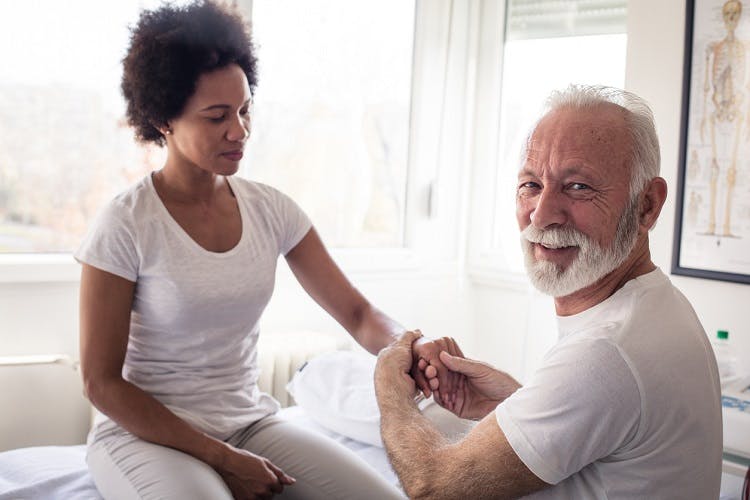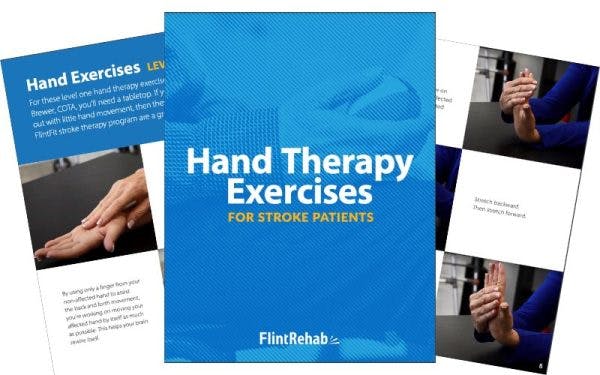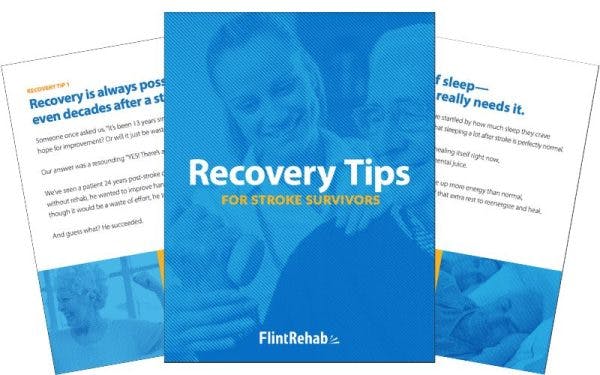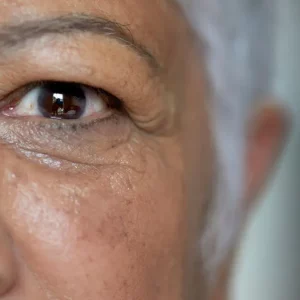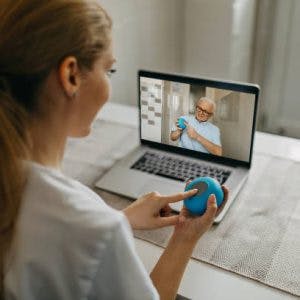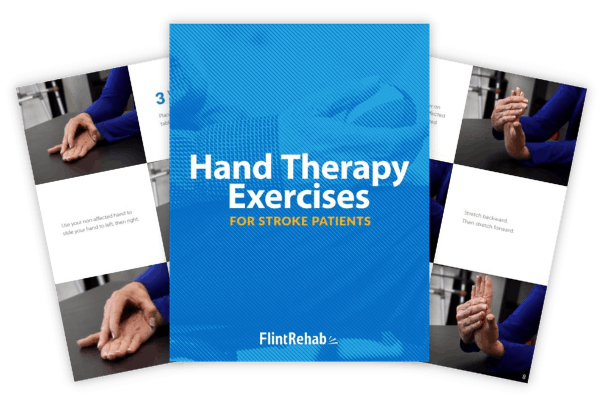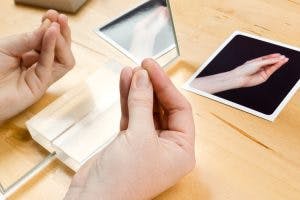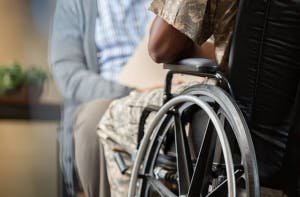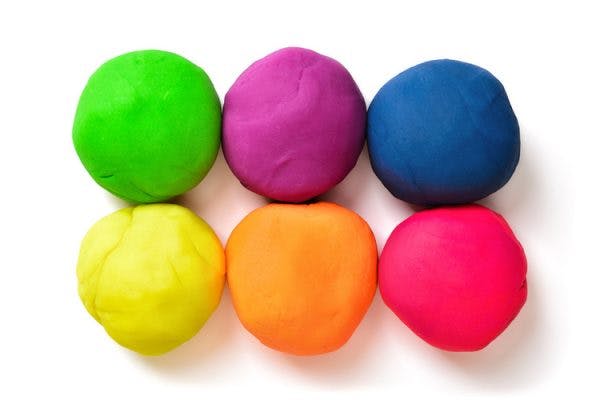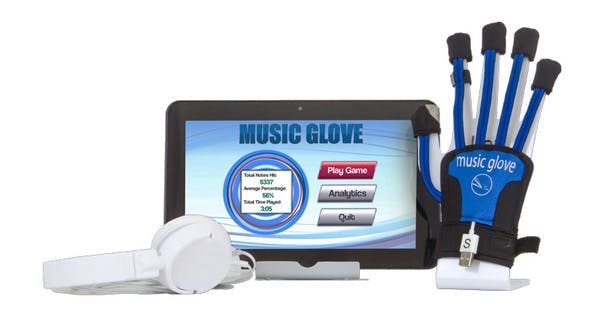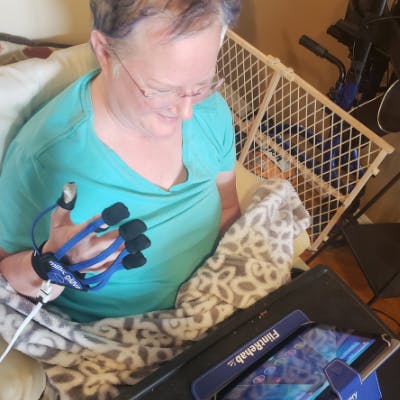Spasticity is a secondary effect commonly experienced after stroke that can cause muscles to become stiff or tight. For many survivors, spasticity affects the arm and hand and often leads to a clenched hand or curled fingers after stroke. This severe spasticity in the hand is due to miscommunication between the brain and muscles, causing the muscles that control the hand to spasm and gradually tighten.
Fortunately, there are ways to rewire the brain and restore mobility in the hand and fingers. This article will discuss the causes and treatment for severe hand spasticity and curled fingers after stroke.
Causes of a Clenched Hand & Curled Fingers After Stroke
The brain and nervous system are in constant communication with your muscles, telling your muscles when to move and when to relax. When a stroke damages areas of the brain that control hand function, such as the motor cortex, it disrupts that communication between the hand and nervous system. As a result, the hand muscles will contract involuntarily, or spasm.
This spasticity and decreased voluntary (intentional) movement prevent the wrist, hand, and fingers from moving through their full range of motion. Over time, spasticity can lead to curled fingers after stroke and, when left untreated, can contribute to the development of contractures.
Contractures are characterized by extreme stiffness or shortening in the muscles, joints, and connective tissue. When contractures develop, the range of motion of the fingers and wrist becomes restricted, causing the fingers to curl into the palm.
It’s important to manage spasticity early to prevent contractures from developing. This will help maximize function and avoid the increased pain or discomfort that can accompany contractures. However, even if spasticity has progressed to contractures, there are still ways to relax the muscles in the hand and fingers, although this will require time and consistency.
Before exploring the different methods of hand spasticity treatment, we’d like to review prevention techniques to avoid worsening of hand spasticity and curled fingers after stroke.
How to Prevent Spasticity in the Hand from Worsening
Learned non-use is a phenomenon that occurs when a person neglects their limb and the brain begins to disengage or disassociate from that limb. Learned non-use occurs frequently following stroke and is a result of the brain trying to compensate for lost function and be more efficient. However, this learned compensation leads to decreased use of the affected limb and can make recovery slower and more difficult.
This is where the popular neurorehab phrase “use it or lose it” comes from. Following a stroke, it may feel easier to compensate for decreased function by using only the more efficient, unaffected limb. However, if you don’t use or move your hand by at least stretching it intentionally on a daily basis, then you will continue to lose hand function and the fingers will continue to curl tighter into the palm.
Fortunately, there’s another popular phrase among neurological rehab therapists: “use it to improve it!” The hand spasticity treatment options below will help you put this into practice.
How to Treat a Clenched Hand After Stroke
There are many hand spasticity treatment methods available to help relax a clenched hand and avoid curled fingers after stroke. It often works best to use a progressive approach, which means starting with basic, simple techniques and moving onto more complex methods or exercises as you improve.
Be sure to work alongside a therapist as clenched hands are a sign of severe spasticity and help from an expert is often crucial for recovery. Your occupational or physical therapist can help set you up for success by providing optimal exercises, splints, and other rehab techniques.
Here are the methods your therapist may recommend to treat hand spasticity after stroke and help relax curled fingers:
1. Hand Splints
Quick tip: Hand splints are a great starting point because they help prevent contractures from worsening. This is not a quick-fix for hand spasticity, but may be an essential first step to avoid further complications.
Daily stretching is vital for patients with clenched hands and curled fingers after stroke. This can be optimized through the use of a hand splint as these devices can provide long-duration, low-load stretching to the muscles and joints of the hand and fingers.
Stretching the hand muscles and connective tissue helps prevent spasticity from worsening into contractures. If contractures are already present, causing fingers to curl into the palm, then gentle stretching will help prevent spasticity from worsening — as long as you perform the stretch in a pain-free range.
Furthermore, stretching the affected hand and focusing your attention on your hand as you stretch will help stimulate the brain and encourage it to rewire itself. Sensory stimulation (looking at your hand while you feel the stretch) helps combat learned non-use by helping to relax the fingers and improving the brain’s awareness of the hand.
It can be especially helpful to perform active or passive stretches and exercises (which we will discuss below) and then apply your hand splint directly afterward. This can help you maintain the progress you made during your exercises. Ask your therapist to recommend a good hand splint to help keep your hand stretched or see our recommended gloves for stroke patients.
2. Hand Spasticity Exercises
Quick tip: The best way to relax clenched hands and curled fingers after stroke is to rewire the brain through exercise. There are many different forms of exercise you can incorporate into your recovery routine depending on your unique symptoms and abilities.
Exercise is arguably the most effective intervention for hand spasticity after stroke. Practicing therapeutic hand movements on a consistent basis helps spark neuroplasticity: the process the brain uses to rewire itself. As hand spasticity exercises are practiced with high repetition, the brain works to create and strengthen neural pathways that communicate with the affected hand muscles.
As the brain starts to regain the ability to send signals to the affected hand, it also regains the ability to send signals that tell the hand and fingers to relax, decreasing spasticity. Ask your therapist to recommend hand spasticity exercises that are most suitable for you.
Keep in mind that active hand exercises may not be immediately accessible for survivors with a clenched hand or curled fingers after stroke. If active exercise is not yet achievable, passive exercise can still be utilized to help reduce hand spasticity.
3. Passive Exercise
Quick tip: Passive exercise is an accessible form of hand spasticity exercise for all stroke survivors with clenched hands. Best of all, it helps spark neuroplasticity and promotes recovery.
When severe hand spasticity and contractures lead to a clenched hand or curled fingers, patients may need to start with passive exercise first. Passive exercise involves assisting your affected hand and fingers through their range of motion. This can be done by using your non-affected side to move your hand or can also be performed with the help of a caregiver or therapist.
Although you’re not exerting effort with your affected hand, studies have shown that passive movement helps spark neuroplasticity. Even if the brain has lost connection with the affected hand, passive movement can help rekindle that connection.
There is always hope for stroke survivors with hand contractures as we know recovery is possible with time, dedication, and consistency. Passive hand exercise is an excellent starting point for reducing spasticity in the hand after stroke.
Want 25 pages of hand therapy exercises in PDF form? Click here to download our free Hand Therapy Exercise ebook now (link opens a pop up for uninterrupted reading)
4. Botox
Quick tip: Botox is a “nerve block” medication that temporarily relieves hand spasticity and helps relax curled fingers after stroke. Your doctor can provide you with more information about this treatment and determine if this may be appropriate for you.
Even with passive exercise, some patients may have severe contractures that do not allow the hand to open at all. When spasticity is severe, your doctor or rehab team may suggest Botox injections, which help relax targeted muscles to loosen the fingers and help correct a clenched hand after stroke.
It is important to note that Botox wears off after several months and often requires repeat injections. For long-lasting improvement, daily hand spasticity exercises and prolonged stretching are necessary to help maximize the effects of Botox.
These exercises, along with the assistance of a hand splint, can help rewire the brain to improve hand function, increase mobility, and correct curled fingers after stroke. Many stroke patients see the best results when they use Botox to create the opportunity to wear a splint comfortably, as the hand and fingers will be more relaxed. Use of a hand splint after Botox can provide prolonged stretch to tight muscles and joints, increasing potential for hand function in the future.
5. Electrical Stimulation
Quick tip: Electrical stimulation provides input to the muscles of the hand to decrease spasticity and encourage muscle activation, improving curled fingers after stroke.
If your therapist feels electrical stimulation is an appropriate treatment for you, this can be a great way to treat spasticity in the hand after stroke. Electrical stimulation is applied via electrodes placed on the skin, sending input to specific muscles and causing them to contract. When electrical stimulation is applied to the forearms, for example, this can help extend the fingers so that they open away from the palm.
In the video below, you can watch a therapist demonstrate electrical stimulation for finger extension. He places the pads on muscles in the arm to help extend the fingers. This is a great example of why you need a therapist’s help to teach you how to safely apply electrical stimulation and where to place the pads for optimal results.
Electrical stimulation works best when combined with hand therapy exercises to provide as much stimulation to the brain as possible. While it helps to use electrical stimulation to cause your fingers to extend, it’s even better to intentionally try to extend your fingers during exercise. Intentional movement is key for activating neuroplasticity and improving spasticity in the hand after stroke.
6. Hand Therapy Exercise Devices
Quick tip: Consistency and repetition are the keys to recovery from hand spasticity and curled fingers after stroke. To help with this, survivors can look to interactive devices for motivation.
Your therapist will provide you with a home program of hand exercises to practice on your own between therapy sessions to keep neuroplasticity engaged. This requires motivation and accountability to help maximize recovery. However, studies have shown that conventional home exercise programs tend to have poor compliance rates.
This is where interactive hand therapy devices can help. For example, Flint Rehab’s MusicGlove is a sensorized glove that tracks your movement as you exercise your hand in sync with a musical game. It’s fun and motivating to use, and it’s both FDA-approved and clinically proven to improve hand function within 2 weeks of use. Survivors with clenched hands may need to use the device passively to accomplish the exercises, but this still sparks neuroplasticity and promotes improvement in spasticity and overall hand function.
Bob & Brad, two physical therapists on YouTube with over 4.5 million subscribers (at time of writing), gave MusicGlove the thumbs up. They were not paid to review MusicGlove and they are not affiliated with Flint Rehab in any way.
7. Baclofen
Quick tip: Baclofen is not used to stimulate neuroplastic changes in the brain but rather to provide short-term relief from spasticity. This, in combination with therapy exercises, can be used to address curled fingers after stroke as well as other spasticity-related deficits.
Baclofen is a medication that helps relieve spasticity by inhibiting the release of body chemicals that cause muscle contractions. This decreases spasticity by reducing overactive nerve firing and involuntary muscle contraction. Baclofen can be taken orally or, in some cases of severe spasticity, it can be administered directly to the spinal cord via an intrathecal baclofen pump.
If spasticity is not only affecting your hand but also severely affecting your quality of life, you can talk to your doctor about this treatment option. Placement of an intrathecal baclofen pump requires surgery and should be considered only once all other options have been exhausted.
8. Progressive, Combination Therapy
Quick tip: Every stroke is different, and every patient will benefit from different approaches. Experiment until you find what works for you.
A clenched hand after stroke is often a result of severe spasticity and, in some cases, muscle contractures. It’s likely that survivors will need multiple techniques to help relax and open the hand in order to improve function. Progressive combination therapy does not refer to a specific treatment, but rather a blend of therapies to help maximize stroke recovery.
Talk with your therapy team to explore your best options for treating curled fingers after stroke. Some patients will benefit from hand splints while others may require medication such as Botox. Additionally, these treatments are often implemented at the same time to optimize results.
No matter which path you choose, it is vital to make hand therapy exercise the foundation of your rehab regimen. Exercise helps activate neuroplasticity, which rewires the brain and allows the fingers to slowly relax and loosen. Movement is key to recovery.
How to Treat Spasticity in the Hand After Stroke
Overall, spasticity in the hand after stroke can lead to a clenched hand and curled fingers when the condition is left unmanaged. The best hand spasticity treatment is exercise because movement helps rewire the brain and restore the brain’s ability to communicate with the hand.
Passive exercise (where the hand is passively moved through each exercise) is a great place to start as this activates neuroplasticity and is accessible to most survivors with curled fingers after stroke. Talk to your physical or occupational therapist to see which combination of hand spasticity treatments is most suitable for you.
A stroke can make everyday tasks feel impossible – but there’s hope. Our FREE eBook “Hand Exercises for Stroke Patients at Home” provides easy-to-follow hand exercises you can do at home to improve strength and coordination.
- Effective exercises designed specifically for stroke patients.
- Step by step instructions and clear illustrations.
- Tips and advice to maximize your recovery.
Download our FREE eBook Hand Exercises for Stroke Patients at Home!

